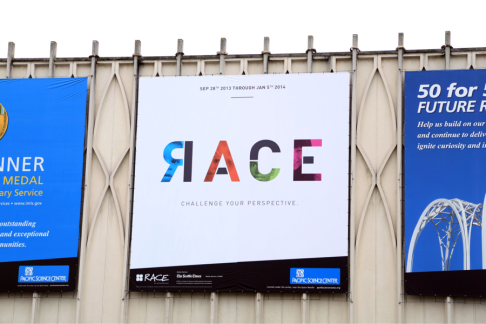After seeing the Race Exhibit at Pacific Science Center, Amber Wolfe Wollam shared some of her stories and thoughts on race. She remembered that in the second grade, she was tested for a gifted program. She didn’t get it.
“My mother always thought, [since] we were living in the east coast, that the only reason I didn’t get in because I was a kid of color, and there weren’t many kids of color,” said Wollam.
However, Wollam, a 40-year-old private school teacher from Seattle, has always been optimistic. She has never felt offended when she’s been asked, “What are you?”
To her, sometimes it was even fun to be “miscellaneous race.” She doesn’t mind answering the question, which many people find offensive. She laughed after she told me her favorite answer.
“I’m half black and half white, like our president,” said Wollam.
Instead of feeling offended, Wollam thought sometimes she might have made people feel uncomfortable. She was always curious to know more about others’ races. She also has a feeling that people who look mixed wouldn’t mind being asked “that question” by somebody else who is mixed. But the fact is, some of them do.
But no matter what, Wollam is very proud of being able to say that her dad is black and her mum is white. She also thinks that the exhibit has successfully challenged hers in some ways, just like what its poster says.

